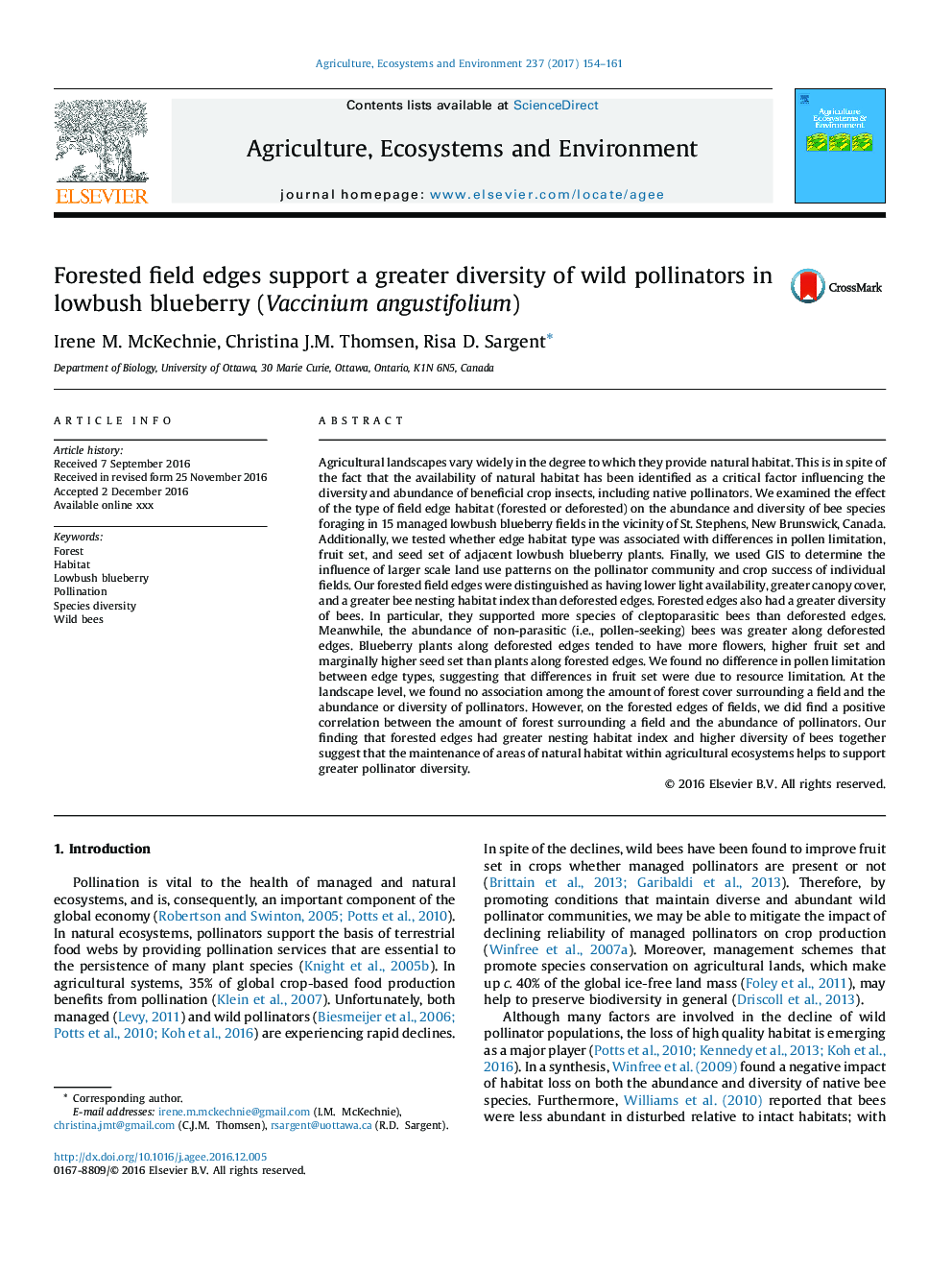| Article ID | Journal | Published Year | Pages | File Type |
|---|---|---|---|---|
| 5538228 | Agriculture, Ecosystems & Environment | 2017 | 8 Pages |
Abstract
Agricultural landscapes vary widely in the degree to which they provide natural habitat. This is in spite of the fact that the availability of natural habitat has been identified as a critical factor influencing the diversity and abundance of beneficial crop insects, including native pollinators. We examined the effect of the type of field edge habitat (forested or deforested) on the abundance and diversity of bee species foraging in 15 managed lowbush blueberry fields in the vicinity of St. Stephens, New Brunswick, Canada. Additionally, we tested whether edge habitat type was associated with differences in pollen limitation, fruit set, and seed set of adjacent lowbush blueberry plants. Finally, we used GIS to determine the influence of larger scale land use patterns on the pollinator community and crop success of individual fields. Our forested field edges were distinguished as having lower light availability, greater canopy cover, and a greater bee nesting habitat index than deforested edges. Forested edges also had a greater diversity of bees. In particular, they supported more species of cleptoparasitic bees than deforested edges. Meanwhile, the abundance of non-parasitic (i.e., pollen-seeking) bees was greater along deforested edges. Blueberry plants along deforested edges tended to have more flowers, higher fruit set and marginally higher seed set than plants along forested edges. We found no difference in pollen limitation between edge types, suggesting that differences in fruit set were due to resource limitation. At the landscape level, we found no association among the amount of forest cover surrounding a field and the abundance or diversity of pollinators. However, on the forested edges of fields, we did find a positive correlation between the amount of forest surrounding a field and the abundance of pollinators. Our finding that forested edges had greater nesting habitat index and higher diversity of bees together suggest that the maintenance of areas of natural habitat within agricultural ecosystems helps to support greater pollinator diversity.
Related Topics
Life Sciences
Agricultural and Biological Sciences
Agronomy and Crop Science
Authors
Irene M. McKechnie, Christina J.M. Thomsen, Risa D. Sargent,
